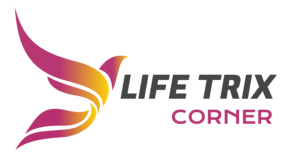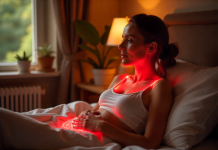Introduction
Are you tired of acne scars that refuse to fade despite countless home remedies? DIY acne scar treatments may damage healthy skin tissue through uncontrolled chemical reactions, excessive abrasion, or improper wound healing mechanisms. Professional treatments deliver controlled energy at specific depths—fractional CO2 lasers penetrate 0.5–1.5mm into the dermis, while home remedies affect only the superficial epidermis or may cause unpredictable deep damage. Visiting a clinic for acne laser treatment Singapore residents trust ensures that procedures are performed with precision equipment calibrated to individual scar types and depths, ranging from 0.2mm for superficial scars to 3mm for deep ice pick scars, using medical-grade protocols that protect surrounding tissue while stimulating collagen remodeling.
Lemon Juice and Citrus Treatments
Lemon juice contains citric acid at pH 2–3, creating an uncontrolled chemical burn that destroys melanocytes and damages the skin barrier. This acidic environment denatures proteins indiscriminately, unlike chemical peels that use specific concentrations applied for precise durations. Phytophotodermatitis occurs when psoralen compounds in citrus react with UV exposure, causing severe hyperpigmentation.
The skin’s natural pH sits at 4.5–5.5, and disrupting this balance triggers inflammatory cascades that worsen scarring. Chemical peels neutralize acids after specific contact times, preventing excessive tissue damage. Home users cannot monitor frosting levels or neutralize acids properly, leading to burns that create new scars rather than improving existing ones.
Post-inflammatory hyperpigmentation from citrus burns can appear darker in certain skin types due to increased melanocyte activity. These marks require months of pigment-targeting treatments to resolve damage that proper initial treatment would have prevented.
Baking Soda Scrubs
Baking soda’s alkaline nature strips the acid mantle, destroying the skin’s protective barrier and allowing bacteria proliferation. This alkaline assault triggers transepidermal water loss in damaged skin. The granular texture creates micro-tears that provide entry points for Cutibacterium acnes, the bacteria responsible for inflammatory acne.
Physical exfoliation cannot remodel scar tissue, which extends into the dermal layer below the surface. Scrubbing removes only the stratum corneum, while creating inflammation that stimulates fibroblast activity in dysfunctional patterns, potentially worsening atrophic scars. Microneedling procedures can penetrate deeper with controlled needle insertion, triggering organized collagen synthesis rather than chaotic scar formation.
💡 Did You Know?
Scar tissue contains collagen fibers arranged in parallel bundles rather than the basket-weave pattern of normal skin, which explains why surface scrubbing cannot restructure these deep architectural changes.
Apple Cider Vinegar Burns
Apple cider vinegar’s acetic acid concentration varies, creating unpredictable chemical burns when applied undiluted. Medical peels maintain consistent concentrations and pH levels—salicylic acid peels at pH 1.9–2.0, mandelic acid at pH 2.5–3.0—with predetermined neutralization points. Home users cannot assess when tissue coagulation occurs, leading to full-thickness burns requiring wound care and leaving permanent scarring.
Contact dermatitis from vinegar manifests as erythema, vesiculation, and intense pruritus. The inflammatory response triggers melanocyte activation, creating post-inflammatory hyperpigmentation that obscures underlying scar assessment. Damaged barrier function increases sensitivity to other products, creating a cycle of irritation that delays proper scar treatment.
Acetic acid denatures proteins throughout the epidermis without selectivity. Fractional lasers create microscopic treatment zones, leaving intact tissue between columns for rapid healing.
Toothpaste and Aspirin Masks
Toothpaste contains sodium lauryl sulfate, triclosan, and menthol—ingredients that can cause contact dermatitis when left on facial skin. These compounds may strip natural oils, potentially triggering rebound oil production that can worsen acne. Fluoride may cause perioral dermatitis, creating papular eruptions around the mouth that can mimic acne but require different treatment.
Aspirin (acetylsalicylic acid) crushed into masks creates uneven particle sizes, causing irregular penetration and unpredictable acid exposure. Professional salicylic acid peels use standardized solutions at controlled pH, penetrating oil glands at consistent depths. Home preparation cannot achieve uniform dissolution or appropriate pH buffering, potentially resulting in chemical burns or negligible effect.
The menthol in toothpaste creates cooling sensations while potentially triggering neurogenic inflammation through TRPM8 receptor activation. This inflammatory cascade releases substance P and calcitonin gene-related peptide, increasing vascular permeability and recruiting inflammatory cells that may worsen scarring.
⚠️ Important Note
Toothpaste formulations vary significantly between brands and types—whitening versions contain abrasives that may cause micro-tears, while sensitive formulas include potassium nitrate that can trigger allergic reactions on facial skin.
Scar Assessment Methods
Dermatologists classify acne scars using the Goodman and Baron scale, which divides them into four grades based on severity and morphology. Rolling scars result from dermal tethering, boxcar scars feature sharp edges and flat bases, while ice pick scars are narrow and deep. Accurate classification determines suitable treatment—subcision for rolling scars, fractional laser resurfacing for boxcar scars, and punch excision or TCA CROSS for ice pick scars.
Professional evaluation also considers scar depth, color, and skin type to design a tailored treatment plan. Imaging tools like 3D optical profiling quantify scar volume reduction over time, providing objective progress tracking.
Conclusion
DIY treatments lack the precision necessary for effective scar reduction and often cause additional damage. Professional laser therapy and chemical peels offer controlled depth and predictable healing outcomes. Medical-grade microneedling stimulates organized collagen formation rather than random tissue damage.















